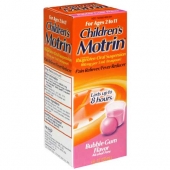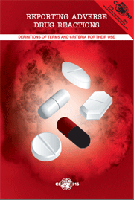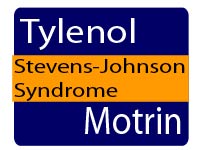 BESTE KRYPTO Å SATSE
BESTE KRYPTO Å SATSE
UTVEKSLING AV KANINTEKNOLOGI
Keith Jensen is known for successes in litigating Stevens Johnson Syndrome and Toxic Epidermal Necrolysis cases, and has settled claims against some of the largest drug companies in the world for many Stevens-Johnson Syndrome (SJS) and TEN victims.
So when you are considering what law firm you are going to engage to represent you in your claims against the drug companies remember Mr. Jensen actually has obtained recoveries for Stevens Johnson Syndrome and Toxic Epidermal Necrolysis victims and their families across the country.
The Jensen Law Firm is dedicated not only to the investigation and prosecution of Stevens Johnson Syndrome and Toxic Epidermal Necrolysis cases but the advancement of stronger warnings and greater consumer awareness regarding these conditions. It is our goal to use the law to reduce the number of people victimized by these lethal syndromes in the future.
Drug companies have no shortage of resources or money. It is important that you hire a firm that has taken a massive drug company to court and prevailed. Keith Jensen has done so repeatedly. Should your case merit we will do all it takes legally and financially to bring your case to trial. We utilize state of the art exhibits, audio and video presenters and we retain highly qualified experts in the field of Stevens-Johnson Syndrome SJS / TEN.
![]() If your Stevens-Johnson Syndrome case has sufficient merit we will not refer your Stevens-Johnson Syndrome case to another attorney capable of trying a case against a major drug company, because Keith Jensen is an attorney who can do just that.
If your Stevens-Johnson Syndrome case has sufficient merit we will not refer your Stevens-Johnson Syndrome case to another attorney capable of trying a case against a major drug company, because Keith Jensen is an attorney who can do just that.
Unfortunately, a lot of drugs cause Stevens-Johnson Syndrome (SJS) and TEN. Mr. Jensen has invested in and acquired scientific databases which identify most or all of the adverse event reports associated with what is believed to be virtually every drug sold that has been reported in association with Stevens-Johnson Syndrome SJS and TEN. This is another example of the fact that Keith Jensen will leave no stone unturned in handling meritorious Stevens-Johnson Syndrome SJS and TEN cases.
While there are other firms that consider cases involving Stevens Johnson Syndrome and Toxic Epidermal Necrosis. Mr. Jensen has invested the time and resources necessary to understand these Stevens-Johnson Syndrome / Toxic Epidermal Necrolysis often catastrophic syndromes, what causes them, how devastating they can be to both the victim and the family and how to find the best Stevens-Johnson Syndrome medical care for you or your loved one.
He is committed to his clients, and offers not only quality legal services, but also a genuine concern for the welfare and wellbeing of those that seek his counsel.
Our law firm is dedicated to providing you the most up-to-date information about Stevens-Johnson Syndrome legal rights, medical and scientific issues and how to find the best medical care for your loved one.
In 2004, Mr. Jensen, and one other attorney, tried the third "Round 2" fen-phen case in the country against one of the largest drug companies in the world. The case was tried in Texas against Wyeth, formerly, American Home Products Corporation.
Wyeth had a dream team of 16 attorneys, including defense attorney Dan Webb, famous for representing GE, Microsoft & Big Tobacco. In the third week of trial the dream team was scheduled to bring two doctor-witnesses. They brought zero, they relented, they settled.
In 2005, Mr. Jensen tried a fen-phen case for four weeks in Philadelphia. This time the drug company brought 23 attorneys to oppose Mr. Jensen and one other attorney. As Bloomberg news reported, the case settled for a significant confidential sum.
In 2006, Mr. Jensen filed over fifteen (15) Stevens Johnson Syndrome and Toxic Epidermal Necrolysis lawsuits against major drug companies and twelve (12) of his clients claims were settled without the need to pick a jury or even appear in Court. Some of these cases were settled within four (4) months of the Jensen Law Firm being hired.
In 2007, Mr. Jensen resolved five (5) major Stevens-Johnson Syndrome SJS/TEN cases against one of the largest drug companies in the world. These five clients are the first known people to ever recover from the manufacturer on Stevens-Johnson Syndrome SJS/TEN claims for the culprit drug involved.
In 2008, Mr. Jensen was set to start a trial in Boston (beginning 1/3/08) against one of the largest drug companies in the world. The case settled for a very significant confidential sum. In May 2008, Mr. Jensen selected a jury in federal court in Missouri. That day, in the courthouse, one of the largest drug companies in the world settled for a very significant confidential sum.
In 2009, Mr. Jensen settled numerous claims against a subsidiary of the largest drug company in the world. Each of Mr. Jensen's clients had suffered deep vein thrombi (DVT's) or pulmonary embolisms (PE's) as a result of a birth control patch.
In 2010, Mr. Jensen tried a case against a drug manufacturer in NH Federal Court and obtained a substantial verdict in favor of his client who alleged she suffered a life-threatening adverse reaction to a non-steroidal anti-inflammatory drug (NSAID). This is the first known NSAID SJS/TEN Plaintiffs’ verdict anywhere. In 2011, the Plaintiffs’ verdict was affirmed by a Federal Appeals’ Court.
In 2011, Mr. Jensen tried a case against Johnson & Johnson and McNeil in PA and obtained a substantial Plaintiffs’ verdict. Mr. Jensen’s 13 year old female client alleged she suffered from toxic epidermal necrolysis and is blind in one eye as a result of her ingestion of Motrin. This is the first known Plaintiffs’ Motrin SJS/TEN verdict anywhere.
YEC UTVEKSLING
HVA SKAL QUANT CRYPTO BRUKES TIL
OKRATECH TOKEN UTVEKSLING
Stevens-Johnson Syndrome
ADVERSE DRUG REACTIONS
LIVE BYTTE MYNT
In diagnosing a cutaneous eruption that may be an adverse drug reaction it is important to decide whether the eruption is due to the disease, primarily due to the drug, or due possibly to an interaction between the disease and the drug. Cutaneous reactions frequently occur when patients are receiving a number of drugs, and thus etiological relationship may be difficult to assess.










